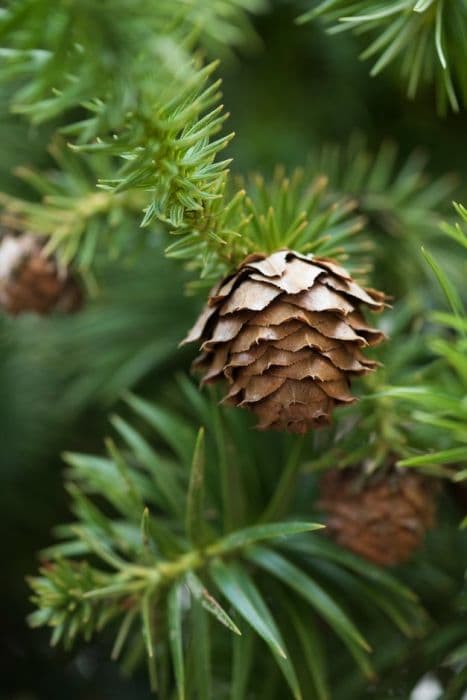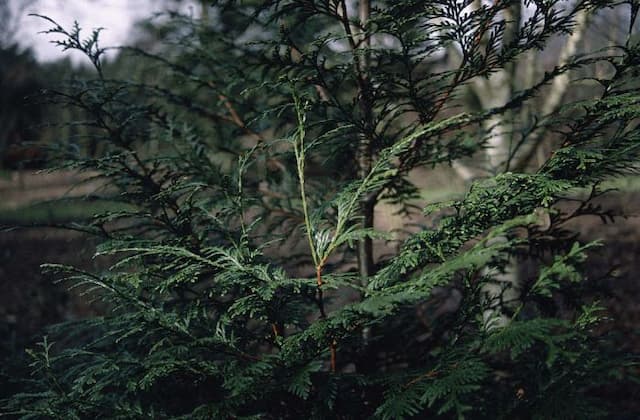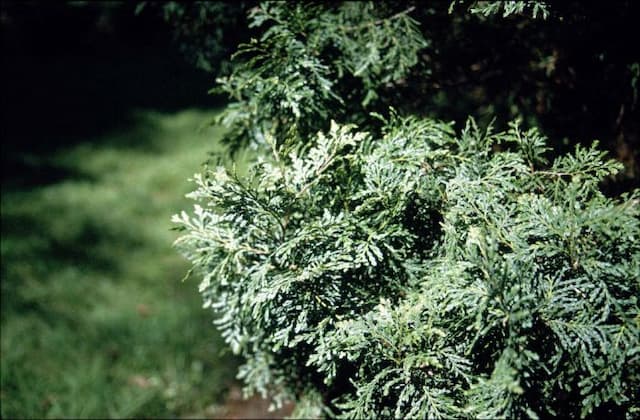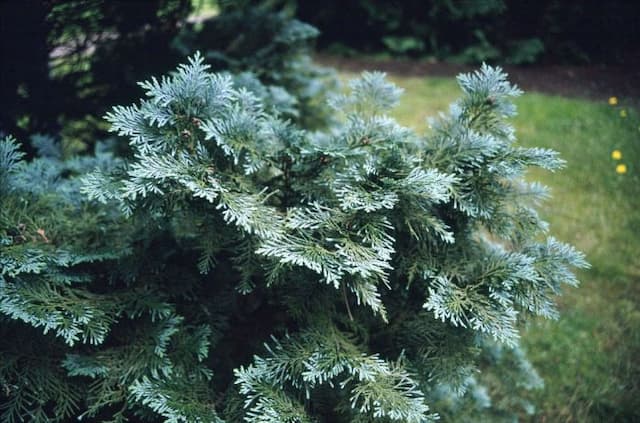Lawson Cypress Chamaecyparis lawsoniana 'Erecta Viridis'
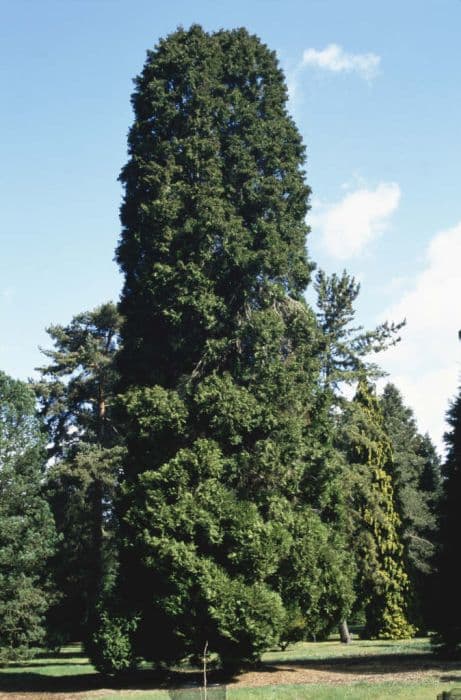
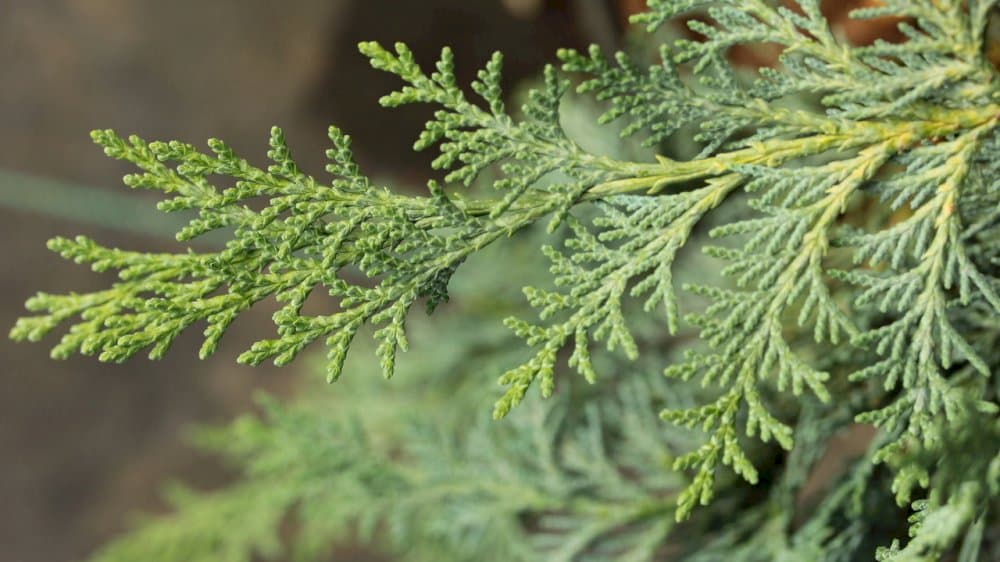
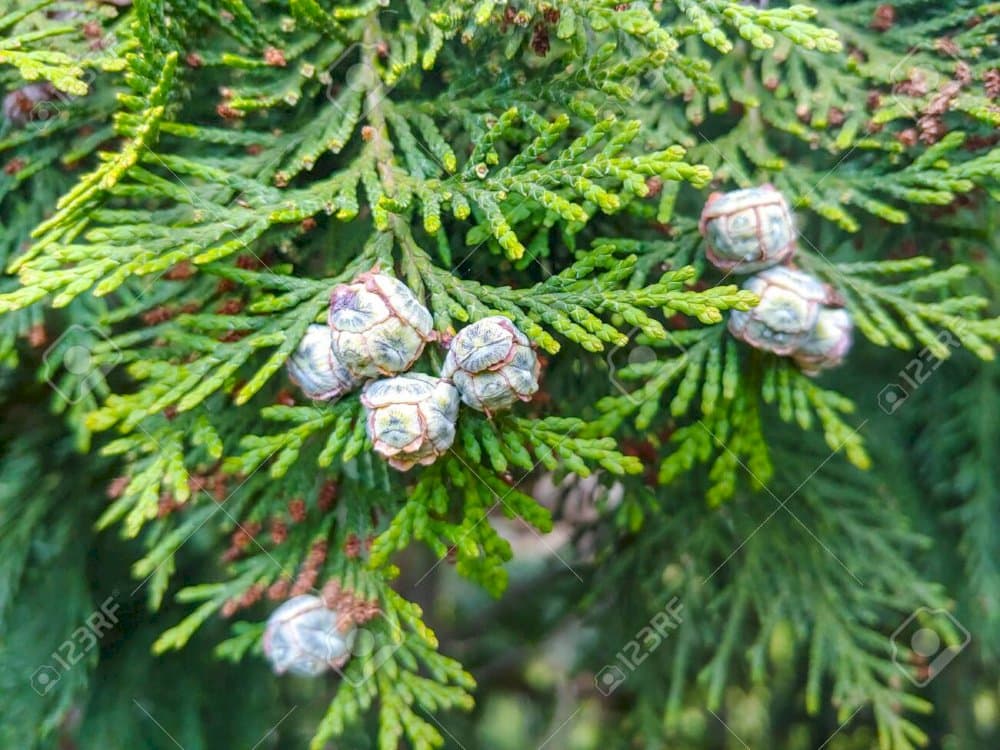

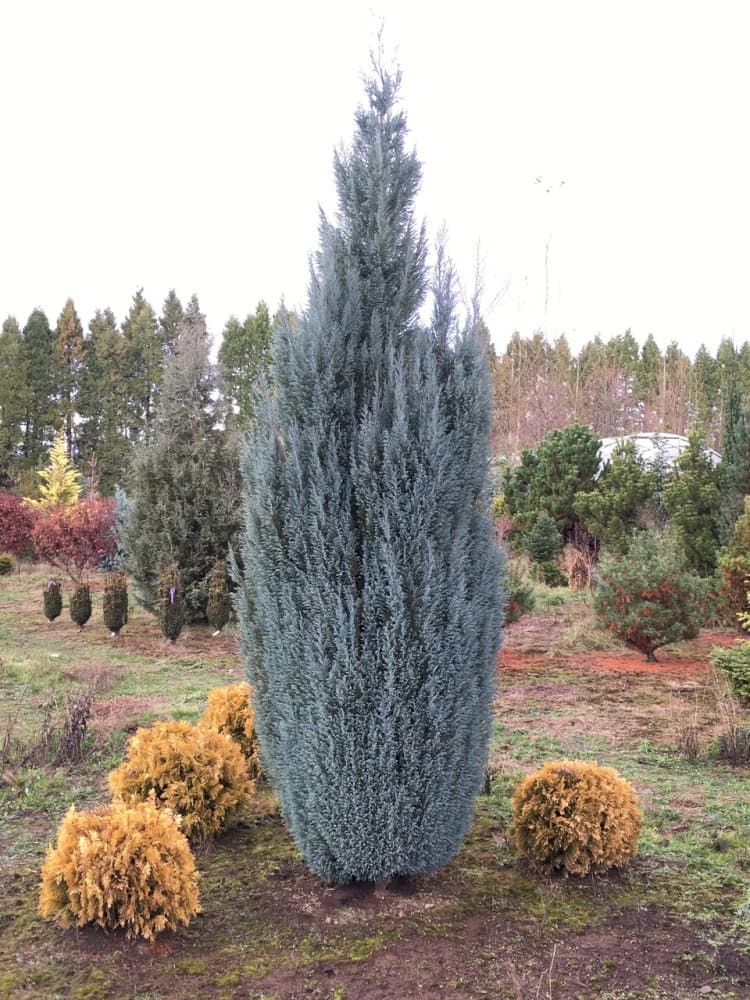
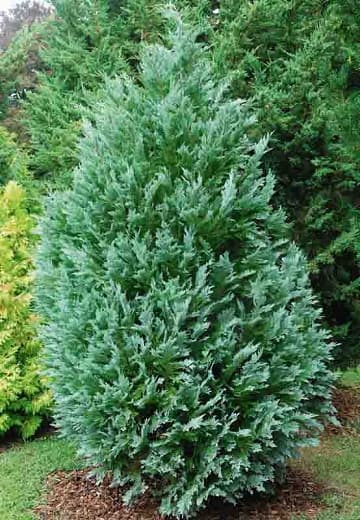
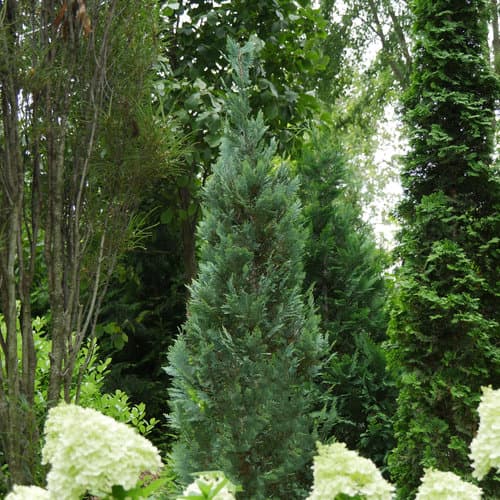
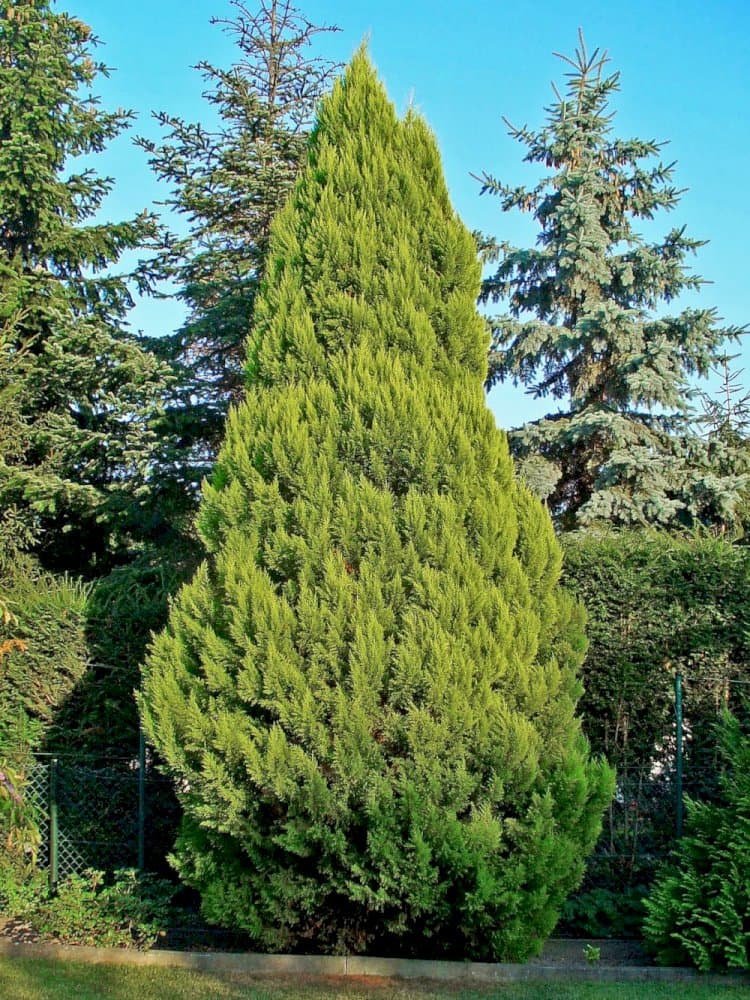

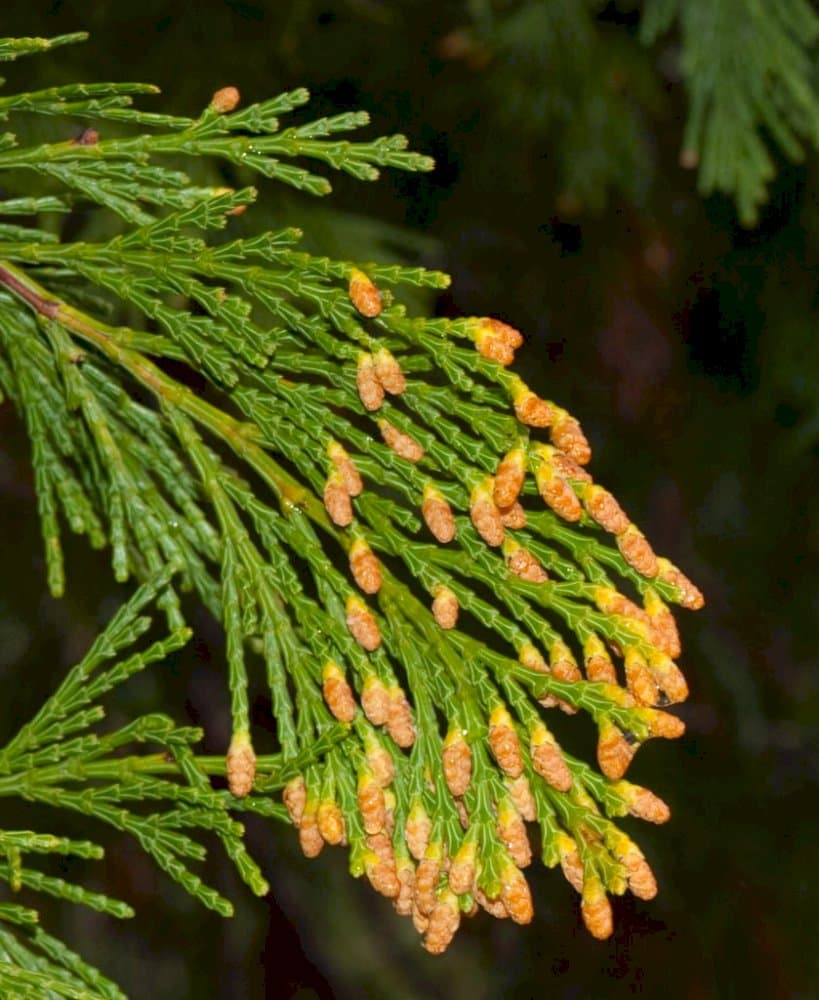
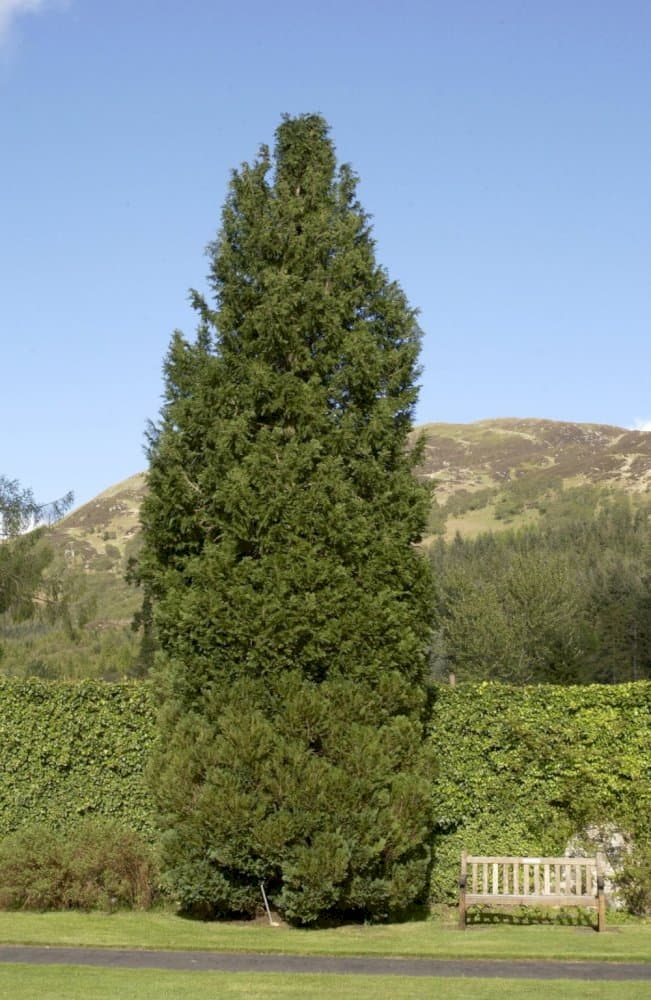
ABOUT
The plant known commonly as Lawson's cypress 'Erecta Viridis' is a coniferous evergreen with an attractive, stately appearance. It has a narrow, columnar growth habit which creates a vertical accent in the landscape. The foliage of this variety is a vibrant, bright green that remains consistent throughout the year. The needles are fine and soft to the touch, presenting a somewhat feathery texture. The leaves grow in dense, flattened sprays, which can add to the lushness of the plant's overall look. As a cultivar of Lawson's cypress, 'Erecta Viridis' features small cones, but these are often not prominent and don't detract from the foliage which is the main ornamental feature. This particular type of Lawson's cypress can be identified by its striking green color and its upright, narrow form which makes it a popular choice for adding vertical lines to garden designs.
About this plant
 Names
NamesFamily
Cupressaceae.
Synonyms
Lawson's Cypress, Oregon Cedar, Port Orford Cedar, Green Pillar Lawson Cypress.
Common names
Cupressus lawsoniana 'Erecta Viridis', Chamaecyparis lawsoniana 'Green Spire'
 Toxicity
ToxicityTo humans
The plant commonly known as Lawson cypress is generally not considered toxic to humans. However, as with many plants, people may have individual allergies or sensitivities that could lead to skin irritation or mild discomfort if they come into contact with the sap or foliage. Ingesting parts of the Lawson cypress is not commonly reported to cause poisoning in humans, but it is not advised to consume any part of ornamental plants. Always keep plants out of reach of children who might accidentally ingest them.
To pets
Lawson cypress is not typically listed as a toxic plant to pets. However, individual animals may experience different levels of sensitivity. If a pet ingests a small amount of this plant, it may lead to mild gastrointestinal upset, including symptoms such as vomiting or diarrhea. If you suspect your pet has ingested a significant amount of Lawson cypress, or if they are showing signs of distress, it is important to consult your veterinarian. As always, it's best to prevent pets from chewing on any ornamental plants to avoid potential issues.
 Characteristics
CharacteristicsLife cycle
Perennials
Foliage type
Evergreen
Color of leaves
Green
Height
10-15 feet (3-4.5 meters)
Spread
3-4 feet (0.9-1.2 meters)
Plant type
Tree
Hardiness zones
5-8
Native area
North America
Benefits
 General Benefits
General Benefits- Ornamental Value: The Chamaecyparis lawsoniana 'Erecta Viridis', commonly known as Lawson's Cypress, has a distinctive, upright growing habit and lush green foliage that provides year-round visual interest in landscapes.
- Drought Tolerance: Once established, it has a good tolerance to drought, making it suitable for regions with lower water availability.
- Windbreak: Its dense growth can serve as an effective windbreak, protecting gardens and properties from strong winds.
- Noise Reduction: Lawson's Cypress can help reduce noise pollution when used as a hedge or as part of a mixed border.
- Privacy Screen: With its tall and dense growth, it is ideal for creating a natural privacy screen between properties.
- Habitat for Wildlife: This plant offers shelter and nesting sites for birds and other wildlife.
- Low Maintenance: It requires relatively little maintenance, aside from occasional pruning to shape or manage size.
- Erosion Control: The root system of the Lawson's Cypress helps to stabilize the soil and prevent erosion, especially on slopes.
- Versatility: It can be used in a variety of landscape designs, from formal hedges to focal points in garden beds.
- Longevity: Lawson's Cypress is known for its long lifespan, providing a lasting element in garden designs.
 Medical Properties
Medical PropertiesThis plant is not used for medical purposes.
 Air-purifying Qualities
Air-purifying QualitiesThis plant is not specifically known for air purifying qualities.
 Other Uses
Other Uses- Landscape accents: Chamaecyparis lawsoniana 'Erecta Viridis', commonly known as Lawson's cypress, can be used to create dramatic vertical elements in garden design due to its erect and columnar growth habit.
- Privacy screens: With its dense foliage, Lawson's cypress can be planted in rows to create natural privacy screens for property borders or to block unsightly views.
- Windbreaks: This tree species can be used in wind-sensitive areas to provide protection from strong winds when planted in a line along the edge of a property.
- Noise reduction barriers: When used as a hedge or screen, Lawson's cypress can help absorb and reduce noise pollution from roads or neighbors.
- Topiary: The evergreen foliage of Lawson's cypress allows it to be shaped into topiary forms for ornamental garden features.
- Theme gardens: It is well-suited for inclusion in conifer or evergreen-themed gardens where its distinct form and color can be showcased.
- Foundation planting: Lawson's cypress can be planted near buildings to conceal foundations or to add evergreen structure to the base of architectural structures.
- Cultural significance: It can be used in Japanese gardens due to its similar appearance to traditional Japanese conifers used in these settings.
- Bonsai: Although less common than other species, Lawson's cypress can be trained as bonsai for enthusiasts looking for a challenge or a unique variety.
- Wildlife habitat: When left to grow naturally, Lawson's cypress can provide shelter and nesting sites for birds and small mammals.
Interesting Facts
 Feng Shui
Feng ShuiThe Lawson's Cypress is not used in Feng Shui practice.
 Zodiac Sign Compitability
Zodiac Sign CompitabilityThe Lawson's Cypress is not used in astrology practice.
 Plant Symbolism
Plant Symbolism- Longevity: The 'Erecta Viridis' is a variety of Lawson's Cypress which is known for its long-lived nature, symbolizing endurance and the ability to stand the test of time.
- Resilience: This plant is able to withstand various climates and conditions, representing adaptability and resilience in the face of adversity.
- Healing: In some traditions, the Cypress tree, to which the Lawson's Cypress is related, has been associated with healing due to its evergreen nature and the refreshing scent of its foliage.
- Protection: Lawson's Cypress has been used in landscaping for privacy hedges and windbreaks, symbolizing shelter and protection.
 Water
WaterTo water the Port Orford cedar properly, ensure that the soil is kept evenly moist but not waterlogged. During the spring and summer growing seasons, water the plant with about 1 to 2 inches of water per week, depending on rainfall and temperatures. In hotter, drier months, increase watering frequency to help the plant cope with the stress, but always check the soil moisture before watering to avoid over-watering. During winter, reduce watering to when the soil feels dry to the touch, as the plant's water needs decrease during dormancy.
 Light
LightThe Port Orford cedar thrives in full sun to partial shade conditions. It performs best in a spot that receives at least four to six hours of direct sunlight daily, ideally during the morning with some afternoon shade to protect it from the intense late-day sun, especially in hotter climates.
 Temperature
TemperatureThe ideal temperature range for the Port Orford cedar is between 60°F and 70°F. The plant is hardy and can tolerate temperatures as low as 0°F and as high as 80°F, but extended periods of heat or cold beyond these limits can stress the tree.
 Pruning
PruningPruning the Port Orford cedar should be done to maintain its shape and to remove any dead or diseased branches. Light pruning can be carried out in late winter or early spring before the new growth begins. Major pruning should be done sparingly, as this plant does not respond well to heavy cutting back. Prune every 2 to 3 years or as necessary to keep the desired form.
 Cleaning
CleaningAs needed
 Soil
SoilThe best soil mix for the Lawson Cypress 'Erecta Viridis' should be well-draining with a mix of loam, peat, and sand to replicate its natural habitat. A slightly acidic to neutral pH of 5.5 to 7.0 is ideal for this cultivar.
 Repotting
RepottingLawson Cypress 'Erecta Viridis' is typically slow-growing and does not require frequent repotting. Repotting every 3-4 years or when the root system outgrows the current container is sufficient.
 Humidity & Misting
Humidity & MistingLawson Cypress 'Erecta Viridis' thrives in moderate to high humidity levels but is adaptable to less humid conditions often found in a typical garden environment.
 Suitable locations
Suitable locationsIndoor
Ensure bright light, cool temps, and air circulation.
Outdoor
Full sun to partial shade, protect from harsh winds.
Hardiness zone
5-8 USDA
 Life cycle
Life cycleThe life cycle of the Lawson's Cypress 'Erecta Viridis' begins with seed germination, where the plant starts as a seed and under the right conditions of moisture and temperature, it sprouts and a seedling emerges. The seedling stage is marked by rapid root growth and the development of juvenile leaves as the plant establishes itself. This progresses to the sapling stage, characterized by increased foliage and the beginnings of the tree's characteristic conical shape. As it reaches maturity, the Lawson's Cypress 'Erecta Viridis' undergoes a period of vegetative growth where it develops dense, scale-like leaves of a vibrant green hue, and the tree continues to grow in height and girth. In its reproductive phase, cones are produced; male cones release pollen, which fertilizes female cones leading to seed development. Finally, the mature tree may live for several decades, where it continues its growth and reproductive cycle until the end of its lifespan, at which point it may succumb to environmental factors, disease, or old age.
 Propogation
PropogationPropogation time
Early spring
The most popular method of propagation for the Lawson's Cypress 'Erecta Viridis' is by semi-hardwood cuttings. This technique is often employed during the latter part of summer or early autumn. To do this, take a healthy cutting from the current year's growth that has begun to harden but is not completely woody. The cutting should be about 4 to 6 inches (approximately 10 to 15 centimeters) in length. The lower leaves are stripped, and the base of the cutting is treated with rooting hormone before being placed in a well-drained potting mix. The cutting must then be kept in a humid environment, such as under a plastic cover, with indirect light until roots develop, which usually takes several weeks to a few months. During this time, it's essential to keep the soil moist but not waterlogged to promote root growth and prevent the cutting from rotting.

